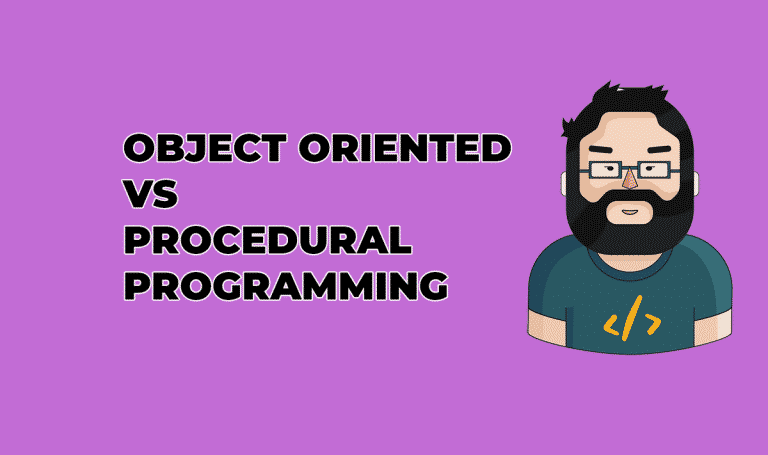Every programming language has a paradigm, or multiple paradigms, on which it operates. These provide diverse concepts through which the elements of a program can be represented and manipulated. Some programming languages employ several paradigms, which in this case, is called multi-paradigm. Two of the most popular programming paradigms include Procedural Programming and Object-Oriented Programming. These two run the most powerful and popular languages we know, including but not limited to Java, C, Python, C++.
Contents
Difference Between Object-oriented Programming and Procedural Programming
It is essential to know the differences between OOP and procedural programming. Knowing the concepts behind them, and the features and languages they support will guide you choose the right language to use to undertake a particular project. OPP and procedural Programming differ, so they shouldn’t be confused with each other. Below are a few identifiable differences:
Definition
There’s no internationally accepted standard when it comes to defining the terms. Simply put, Object-oriented programming is a style which treats data as objects with attributes and methods that can be applied to these objects and also be inherited by other objects. Java is a great example of a language which employs this concept. But Java is a multi-paradigm language and it also uses a few concepts familiar to Procedural Programming. Procedural programming, on the other hand, is a type of imperative programming, where statements are put into procedures, which can be called back when needed. C uses procedural programming.
OOP is centered on classes and objects. By representing variables as objects, a function (method), can be passed unto it. An object belonging to a particular class can be treated independently. OOP can be class-based, which in this case, objects are based on pre-defined classes. Prototype-based OOP also exists, whereby there is no need for classes and only objects are used.
Procedural programming doesn’t need objects. Like its name implies, it has procedures which could be data structures, routines, and subroutines.
Terminology
The terminology used in each paradigm varies, although they may mean the same thing. In procedural programming, functions are termed “procedures”, while in OOP; they will rather be named as “methods”.
The nomenclature of data structures also differ. Procedural programming labels them as “records” while OOP uses “objects”. Procedural Programming uses a procedure call to call a function, meanwhile, OOP uses a message call to request actions from objects.
Inheritance
The most distinguishable characteristic of the OOP paradigm is inheritance. Inheritance gives OOP a boost, by enabling an overall ease through which code can be reused and extended without changing existing code. New objects are capable of “inheriting” the properties of older objects. A subclass can, therefore, override a method defined in a superclass. In cases where an object inherits features from more than one parent object, the concept of Multiple Inheritance ensues.
Procedural programming does not support inheritance. Inheritance can only be applied to objects. Because procedural programming lacks objects, it is void of this feature, thus distinguishing it from OOP.
Subtyping
In OOP, subtype polymorphism can be achieved, whereby a function written for the elements of a datatype (supertype) can be made to work on the elements of another related datatype (subtype). The principle of substitutability comes into play; objects in a type may be replaced by objects in another type if there is an “is-a-subtype-of” relationship between the types. OOP is versatile and as such, substitutability can be implemented without changing other properties.
Procedural programming fails to have this ability. As such, subtypes and supertypes cannot be declared. Neither can behavioural subtyping be attained.
Encapsulation
Unlike its counterpart, OOP is capable of binding data, as well as the methods handling the data. It forms an imaginary capsule that envelops the data and methods, thereby protecting them from outside interference. Encapsulation is a type of abstraction which OOP does rather well. The code can be written to restrict the usage of data outside of the capsule in which it is employed.
That’s all you need to know about OOP vs Procedural programming. Let me know your thoughts in the comment section below.

